Introduction
Burnout is more than just feeling emotionally or mentally exhausted. When you think of burnout, you might picture emotional exhaustion or a lack of motivation, but the reality is much more complex.
Burnout physiological symptoms are often overlooked, even though they can severely impact your health and well-being. From chronic fatigue and headaches to digestive issues and high blood pressure, the effects of burnout on your body can be both immediate and long-lasting. And if left unchecked, these symptoms can lead to serious conditions like heart disease, diabetes, and autoimmune disorders.
Understanding the physical manifestations of burnout is crucial in preventing long-term damage. The constant pressure to perform, combined with extended periods of stress, creates a storm in your body that can only be calmed by proactive intervention. Fortunately, evidence-based therapeutic approaches can help manage these symptoms before they spiral out of control.
At Amplify Therapies, Tahn Miller, a psychotherapist based in Melbourne, specialises in treating burnout using neuroscience and psychotherapy techniques to address both the mental and physical aspects of this condition. By recognising the physiological symptoms of burnout early and seeking professional support, you can avoid the long-term health risks that come with prolonged stress.
In this blog, we’ll delve into the physiological symptoms of burnout and explore the potential long-term physical risks that arise when burnout is left unmanaged.
What Are the Physiological Symptoms of Burnout?
Burnout doesn’t just stay in your head—it affects your entire body. When you’re constantly under stress, your body remains in a prolonged “fight or flight” state, triggered by the sympathetic nervous system. While this response is helpful in short-term stress situations, long-term activation can cause serious damage to various bodily systems. Here are some of the key burnout physiological symptoms to watch for:
1. Chronic Fatigue
One of the earliest signs of burnout is chronic fatigue, where you feel physically and mentally drained, no matter how much sleep you get. Burnout-induced fatigue differs from everyday tiredness; it’s a deep, lingering exhaustion that affects your energy levels, productivity, and even your ability to enjoy activities.
2. Insomnia and Sleep Disturbances
Burnout often leads to sleep problems, such as difficulty falling or staying asleep, restless nights, or waking up feeling unrefreshed. This disruption is partly due to elevated levels of cortisol, the stress hormone, which interferes with your body’s natural sleep-wake cycle. Over time, lack of sleep worsens burnout and contributes to further physical and mental decline.
3. Muscle Tension and Pain
Many people with burnout experience physical tension, particularly in the neck, shoulders, and back. This tension can develop into chronic pain, headaches, or migraines, as your muscles are in a constant state of contraction due to stress.
4. Weakened Immune System
Prolonged stress from burnout weakens your immune system, making you more susceptible to infections, colds, and flu. The constant release of stress hormones like cortisol impairs immune function, meaning your body struggles to fend off common illnesses. Over time, this can lead to more severe health issues.
5. Gastrointestinal Issues
Burnout can cause a range of digestive issues, including nausea, stomach cramps, constipation, and diarrhoea. This is because the brain and gut are closely linked—when stress is high, digestion slows down or becomes irregular, causing discomfort and gastrointestinal problems.
6. Increased Heart Rate and Blood Pressure
When stress becomes chronic, it elevates your heart rate and blood pressure. This can lead to long-term cardiovascular problems, such as hypertension, heart disease, or even an increased risk of heart attack. Burnout’s physiological effects on the heart are particularly dangerous because they often go unnoticed until a more severe health crisis occurs.

Long-Term Physical Risks from Burnout
If left unmanaged, burnout can lead to serious long-term health complications. The physical toll burnout takes on your body is cumulative and can result in chronic conditions that significantly impact your quality of life. Here are some of the long-term physical risks from burnout:
1. Heart Disease
Studies show that people experiencing chronic burnout are at a higher risk of developing heart disease. The persistent elevation of stress hormones like adrenaline and cortisol increases inflammation, blood pressure, and heart rate, which over time, contribute to the hardening of arteries and other cardiovascular issues.
2. Diabetes
Prolonged stress associated with burnout can lead to insulin resistance, a condition where your body’s cells don’t respond properly to insulin. This can eventually lead to Type 2 diabetes, especially when combined with burnout-induced unhealthy habits like poor diet, lack of exercise, and irregular sleep patterns.
3. Chronic Fatigue Syndrome
Burnout can evolve into Chronic Fatigue Syndrome (CFS), a debilitating condition characterised by extreme fatigue that doesn’t improve with rest. CFS affects not only your energy levels but also your concentration, memory, and ability to perform daily tasks, causing a drastic decline in quality of life.
4. Depression and Anxiety Disorders
Burnout, if left unaddressed, can contribute to the development of mood disorders such as depression and anxiety. The constant state of physical exhaustion, combined with emotional and mental fatigue, puts tremendous strain on your psychological well-being, making it harder to cope with daily life and increasing the risk of mental health conditions.
5. Autoimmune Diseases
Burnout’s impact on the immune system can also contribute to the development of autoimmune diseases, where the body mistakenly attacks its own tissues. Conditions such as rheumatoid arthritis, lupus, and multiple sclerosis have been linked to prolonged stress and burnout, as the immune system becomes deregulated.
How to Address Burnout’s Physiological Symptoms
Addressing burnout is essential for preventing long-term physical risks and reclaiming your health. Recognising the physiological symptoms early on allows you to take steps to reverse the damage before it becomes chronic. One of the most effective ways to manage burnout is through evidence-based psychotherapy techniques.
At Amplify Therapies, Psychotherapist Tahn Miller, specialises in treating burnout using a neuroscience-based approach. Through tailored therapy sessions, Tahn helps clients identify the root causes of their stress, address unhealthy thought patterns, and implement practical strategies for recovery. Tahn also integrates clinical hypnotherapy, to reduce stress and promote relaxation, addressing both the mental and physical symptoms of burnout.
Additionally, adopting stress management techniques such as breathwork and mindfulness can be powerful tools for mitigating the physiological effects of burnout. These practices help to reset the nervous system, lower cortisol levels, and improve heart rate variability, all of which contribute to reducing burnout’s impact on the body.

Conclusion
Burnout is not just an emotional or mental struggle—it manifests in the body as physical symptoms that, if ignored, can lead to serious long-term health risks. From chronic fatigue and sleep disturbances to heart disease and autoimmune conditions, the physiological symptoms of burnout are a clear signal that stress is taking a toll on your body. The good news is that with early intervention and support, these symptoms can be managed and even reversed.
If you’re experiencing any of the physiological symptoms of burnout, seeking professional help is crucial. Psychotherapists like Tahn Miller offer evidence-based solutions, including clinical hypnotherapy and neuroscience-backed strategies such as breathwork, to help you manage burnout and its physical consequences. By addressing both the mental and physical aspects of burnout, you can restore balance to your life and protect your long-term health.








